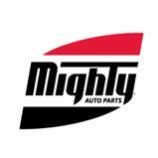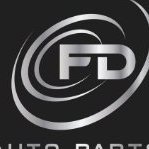-
Welcome to Auto Parts Forum
Whether you are a veteran automotive parts guru or just someone looking for some quick auto parts advice, register today and start a new topic in our forum. Registration is free and you can even sign up with social network platforms such as Facebook, X, and LinkedIn.
Classification of stamping process
-
Similar Content
-
Economic factors may lead to a decline in new car sales in the United States in 2019
By 袁春凤 (Tiffany),
- car
- light vehicles
- (and 2 more)
- 0 replies
- 1,711 views
-
Toyota's sales in China surpassed Honda's in 2018, with 1.47 million vehicles "left room"?
By 袁春凤 (Tiffany),
- toyota
- auto parts
- (and 1 more)
- 1 reply
- 1,327 views
-
- 0 replies
- 1,279 views
-
- 1 reply
- 1,428 views
-
- 0 replies
- 1,304 views
-
-
Similar Topics
-
By Mighty Auto Parts
The post
link hidden, please login to view appeared first on link hidden, please login to view. Troubleshooting today’s technology can be challenging for even the most experienced technician. Making an accurate diagnosis, rather than throwing a lot of expensive parts and labor at the symptom can be a challenge. How would your shop handle the following customer complaints? a) Crank but no-start b) Hard starts c) Long crank time d) Misfire […]
The post
link hidden, please login to view appeared first on link hidden, please login to view.
link hidden, please login to view -
By Feda Auto parts
1. Depending on the fuel used
According to the different fuel used, automobile engines can be divided into gasoline engine, diesel engine, CNG engine, LPG engine, dual fuel engine and so on five kinds
A. An internal combustion engine that uses gasoline as fuel is called a gasoline engine; Gasoline engine has high speed, low quality, low noise, easy starting and low manufacturing cost.
B. An internal combustion engine that uses diesel as fuel becomes a diesel engine. Diesel engine has higher compression ratio, higher thermal efficiency, better economic performance and emission performance than gasoline.
C. Combustion engines that use compressed natural gas (CNG) as fuel are called CNG engines. Natural gas, which is mainly composed of methane and is burned to produce carbon dioxide and water, is a very safe and environmentally friendly energy source.
D. An internal combustion engine that uses liquefied petroleum gas (LPG) as fuel is called LPG engine. LPG has the characteristics of high calorific value, full combustion, and low content of carbon monoxide, hydrocarbons and sulfide in the exhaust.
E. Internal combustion engines that can use both fuels are called dual fuel engines, such as hydrogen/gasoline engines, LPG/ gasoline engines, CNG/ gasoline engines, and so on.
2. Classification by stroke
According to the different working stroke of the engine, the automobile engine can be divided into four stroke engine and two stroke engine.
A. The internal combustion engine in which the
link hidden, please login to view turns twice (720°) and the piston moves up and down in the cylinder for four strokes to complete one working cycle is called the four-stroke internal combustion engine, which is widely used in automobile engines. B. The crankshaft rotates once (360°) and the piston reciprocates two strokes in the cylinder to complete one working cycle of the internal combustion engine called the two-stroke internal combustion engine.
3. Classified by cooling method
According to different engine cooling methods, automobile engines can also be divided into water - cooled engines and air - cooled engines.
A. The water-cooled engine is cooled by using the coolant circulating in the cylinder body and the cover cooling water jacket as the cooling medium. Water-cooled engine is widely used in modern automobile engine because of its uniform cooling, reliable operation and good cooling effect.
B. The air-cooled engine is cooled by using the air flowing between the cylinder body and the radiator on the outer surface of the cylinder head as the cooling medium.
4. Classify according to the number of cylinders
According to the number of engine cylinder block cylinder, the engine can be divided into single
link hidden, please login to view, double cylinder and multi-cylinder engine. An engine with only one cylinder is called a single cylinder engine; An engine with more than two cylinders is called a multi-cylinder engine, such as three cylinders, four cylinders, five cylinders, six cylinders, eight cylinders, twelve cylinders are all multi-cylinder engines. Modern car engine uses four cylinder, six cylinder, eight cylinder engine.
5. Classification by cylinder arrangement
According to the arrangement of engine cylinders, there are five common forms of automobile engines, which are in-line, oblique, opposed, V and W.
The cylinders of an in-line engine are arranged in a row, usually vertically, but in order to reduce the height, the cylinders are sometimes arranged to tilt or even level; A double-row engine arranges the cylinders in two rows. The Angle between the two rows is less than 180° (generally 90°), called a V-engine. If the Angle between the two rows is equal to 180°, it is called an opposing engine.
6. Classified according to whether the intake system adopts supercharging mode
According to whether supercharged can be divided into non-supercharged and supercharged two categories, gasoline engine more natural inspiratory type; In order to increase the power, the diesel engine adopts supercharging.
7. Sort the piston according to its working mode
According to the piston working mode, the engine can be divided into two categories: reciprocating piston type and rotor piston type. A reciprocating piston engine, referred to as a piston engine, is an engine that uses one or more pistons to convert pressure into rotational kinetic energy. Reciprocating piston engine, the reciprocating linear motion of the piston in the cylinder, through the crankshaft to convert the linear motion of the piston into the rotation of the crankshaft, general engines are used in this form.
The rotor piston engine is referred to as the rotor engine, which drives the engine spindle to rotate through the rotation of the piston in the cylinder.
8. Type by fuel supply
Gasoline engines can also be divided into carburetor and electric injection according to different fuel supply methods.
The carburetor relies on the negative pressure formed by the intake air flow of the engine to absorb and atomize gasoline for combustion work; Carburetor engine fuel supply is the use of the throat set above the throttle, air flow through the throat to produce negative pressure, the gasoline from the main nozzle continuous suction, into the engine intake manifold, into the cylinder.
Its ejector engine is called electronically controlled gasoline injection engine, which consists of intake system, fuel system, electronic control system and so on. It is based on the sensor installed in the near term system of the engine and the body of the sensor perceived information, provided to the computer control system, accurate calculation of the fuel supply required by the engine in various conditions, and to provide the required pulse width to the fuel injector, and then there will be a certain pressure of fuel through the injector into the intake manifold or cylinder. It has much stronger environmental protection than carburetor engine, but also improve the engine inflation efficiency, increase the engine power and torque.
-
By Mengjuan Zhu
According to the different driving mode, the pump is generally divided into mechanical pumps and electric pumps. Most of the engines now use mechanical pumps, and electric pumps have been used in some newly developed, technologically high engines, such as the BMW 6-series (E63) engine.
(1)Mechanical pumps
The mechanical water pump is driven by the engine crankshaft through the driving tape, and its rotational speed is proportional to the engine speed. The working methods of mechanical pumps have both advantages and disadvantages. When the engine is working under high speed and heavy load conditions, the heat produced by the engine, the high speed of the pump makes the circulating flow of the coolant increase, so that the cooling capacity of the engine can be improved. When the engine is working under low speed and heavy load, such as traction other vehicles or open air conditioner, the engine speed is low and the speed of pump is low. , which lowers the engine's cooling capacity.
(2)Electric pumps
Electric water pump has brushless electric pump and brush electric pump. The electric pump is controlled by the engine control unit through the current, which is not affected by the engine speed, and can be flexibly operated according to the actual cooling of the engine. Because the electric pump consumes very little engine power, the fuel consumption of the engine can be reduced after the electric pump is used.
Thanks for your reading. If you have any questions, please contact me [email protected].
link hidden, please login to view
-
By Erica Zhu Feilong Jiangli
Stamping technology is an advanced metal processing method. It is based on the plastic deformation of metal. It uses dies and stamping equipment to exert pressure on the sheet metal under normal temperature conditions, so that the sheet metal produces plastic deformation or separation, so as to obtain parts with certain shape, size and performance. Stamping technology is widely used in automobile industry, and is the key technology in automobile body manufacturing.
Stamping features:
(1) it is easy to operate, easy to realize mechanization and automation, and has high productivity.
(2) The dimension precision of the part is guaranteed by the mould. Generally, it can be used for assembly without cutting, so the quality is stable.
(3) it is possible to obtain parts with complex shapes which cannot be machined or processed by other metal processing methods.
(4) Generally, it does not need to heat the blank, nor does it need to remove a large number of metals like cutting, so it not only saves energy, but also has a high utilization rate of materials.
(5) The raw materials used are rolled sheets or strips, and the surface of the material is generally not damaged during the stamping process, so the surface quality of the stamping parts is better.
The stamping process is carried out on punching presses or presses. Special punching tools are equipped on punching presses or presses.
-
By Erica Zhu Feilong Jiangli
The stamping process can be divided into different classes according to different standards.
(1) according to the different deformation properties, it can be divided into separation process and forming process.
Separation process: the material is processed under external force to produce deformation, as used in the deformation part of the equivalent stress reached the shear strength of the material, the material will produce shear cracking and separation, thus forming a certain shape and size of the parts. These stamping processes are generally referred to as separation processes, such as tailoring, punching, blanking, and cutting.
Forming process: under the action of external force, the equivalent stress acting on the deformed part of the material is between the yield limit and the strength limit of the material. The material only produces plastic deformation, so as to obtain a certain shape and size of the parts. These stamping processes are collectively called forming processes, such as bending, drawing, forming and other deformation processes.
(2) according to the basic deformation mode, it can be divided into blanking, bending, drawing and forming.
Punching: Punching, such as punching, blanking, etc., is a process in which materials are cut apart along closed or non-closed contours.
Bending: The stamping process of bending a material into an angle or shape is called bending, such as bending, crimping, twisting, etc.
Drawing: The process of drawing a flat blank into a hollow part, or further changing the shape and size of the hollow part with a drawing die, is called drawing. There are thinner drawing and thinner drawing.
Forming: The stamping process that causes material to deform locally to change the shape of a part or blank is called forming, such as flanging, shrinkage, etc.
-






Recommended Posts
Join the conversation
You can post now and register later. If you have an account, sign in now to post with your account.
Note: Your post will require moderator approval before it will be visible.